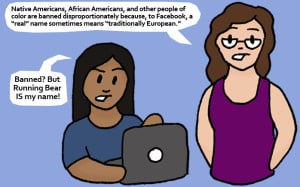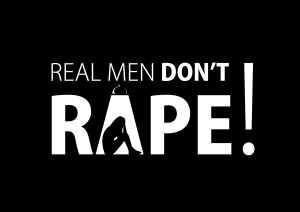This video is part of a series for Everyday Feminism, a website dedicated to helping you stand up to and break down everyday oppression. Even in 2015 there’s still a huge amount of controversy surrounding the wage gap. You’ve probably already heard the statistics surrounding women making less average income than men. This disparity has been justified for a multitude of reasons, including women’s choices in having children and simply choosing lower paying jobs out of preference. This video is going to break down these myths surrounding the wage gap and discuss why the idea of the wage gap being a myth is actually a myth, aka the wage gap myth myth.
According to a 2010 study done by the US Census Bureau, when we average the incomes of all working women of all races their incomes are 78% of the average income of working men. However, when we consider race, women of color earn considerably less than even their white counterparts. In 2013, black women earned 64% of what white men were paid. The wage gap was even higher for Native American and Latino women, who in comparison to white men earned 59% and 54% respectively.
While it can be useful to look at the incomes of men and women as a whole, it still doesn’t account for things like hours worked, educational level, work experience or the type of job. However, even when we control for these factors the gender pay gap still exists. The US Bureau of Labor Statistics released a 2014 report examining the median weekly earnings of full time wage and salaried workers that took gender and job position into account. When type of job and job position are controlled for, the gender wage gap disparity still exists in every single field.
Even when we take education into consideration, the pay gap still exists between men and women with the same level of education who majored in the same field. I also want to note that the bulk of research on this subject perpetuates the gender binary by only focusing on men and women, and not including gender non-conforming or non-binary individuals. Also the statistics that I found on married couples were predominantly centered around heterosexual couples. Go figure.
There are many sexist assumptions about women’s labor that continue to contribute to wage inequality between men and women today. I want to note that this is a very complicated subject and I’m not going to be able to go into as much detail about this as I would like, but I am going to have all of my sources cited below if you want to check them out for yourself.
Our current workforce is highly segregated by gender. This began in the late 1800s and 1900s when women entered the professional workforce and certain professions such as teaching, nursing, librarianship, clerical and sales all became dominated by women. According to research done by Bergman, O’Neill, Blau and various other researchers, feminized jobs or jobs that are female dominated pay relatively lower wages than male dominated jobs. We literally put a lower price on women’s work than we do on men’s work. Even in areas of feminized labor, men still earn more than women. According to the Bureau of Labor Statistics, women are paid less than men in all occupations, whether they be female dominated, male dominated or gender balanced.
The wage gap is often dismissed as being the result of women’s preferences and career choices. However, these preferences are often based on social and cultural factors that affect the lines of work that women go into and the way that work is valued. Women are told from birth that there are specific talents and preferences that girls are supposed to have and they’re nurtured and encouraged accordingly. This is reinforced in all areas, including education, the media and eventually the workforce.
This is actually an excellent time to mention STEM fields, which are generally perceived as being male jobs. If you look on the surface, the stereotype might seem pretty accurate because women make up about half of the overall workforce, but only make up 27% of science and engineering jobs. However, there are many social factors in place that contribute to this such as the lack of encouragement in schools, a lack of representation of women scientists in the media, marginalization and harassment within educational programs and the workplace, and straight out discrimination by employers.
The third contributing factor to the wage gap is what’s commonly referred to as the second shift. Studies done by Freeman and Schettkat consistently show that women spend more time doing domestic labor than their husbands, which frees up the husbands’ schedules to spend more time in the workplace. According to this research, modern women do about 2 to 3 times more household work such as cooking, cleaning or taking care of children than men do. However, in the last half a century women have entered the workforce in droves. While the proportion of working men to working women has pretty much evened out, statistically we don’t see the same evening out of household responsibility.
Research from Argentine-American economist Graciela Chichilnisky, which I’m sure I’m pronouncing wrong, shows that unequal division of labor at home only adds to the gender wage gap. While married women can obviously be excellent and devoted workers, doesn’t it seem like dividing up household labor equally between partners might be a good way to go? According to research done by Ginther, Waldfogel, and Winder who apparently all came out of children’s storybooks, married women who also have children experience more income inequality than single women with no kids. Basically the moral of these statistics is ladies, don’t get married and have kids if you don’t want your income to be affected.
The wage gap is most apparent in occupations with the highest pay and demand, where 24/7 availability is required. This is part of the reason why women with children are often excluded from the highest paying jobs, whereas men with children don’t really have that problem. Women are also typically considered higher cost workers because of the indirect labor costs associated with women workers, but almost all of these unequal labor costs stem from the unequal division of parenting that’s generally assigned the women with children. It’s assumed that women will be more likely to take time off work or leave their jobs because of family responsibilities. Hey, maybe we should consider that equal division of labor thing that I discussed earlier. Just a thought.
Studies from Anchor and Hines show that while women were more likely to take off time from work than men, the differences were statistically insignificant. Another reason that women have been discriminated against in the workplace is because of the higher cost associated with paid maternity leave. While I want to point out that many pregnant women and mothers experience discrimination and income inequality in the workforce, this association of women with motherhood relies on the assumption that all women choose to or have the ability to have children, and I’m going to say it. Assuming that all women make the same life choices quite frankly is a little sexist.
The issue of women experiencing income inequality is a complicated one, but there are multiple steps we can take to fix it. These include, but are not limited to, equal division of household labor among couples, paid maternity and paternity leave, better access to child care, legislation that brings women greater freedom in making their own choices in reproductive rights, anti-discrimination laws for women with disabilities, queer and trans women, and other sexual and gender minorities.
Sources:
Anker, Richard. “Theories of Occupational Segregation by Sex: An Overview.” International Labour Review 136.3 (1997): 315-39.ProQuest. 11 May 2015 .
Chichilnisky, Graciela, and Elisabeth Hermann Frederiksen. “An Equilibrium Analysis of the Gender Wage Gap.” International Labour Review 147.4 (2008): 297-320. ProQuest. 11 May 2015
“The Gender Gap” by Graciela Chichilnisky: http://persiangendernetwork.org/uploa…
“The Influence of Social Values and Childhood Socialization on Occupational Gender Segregation and Wage Disparity” By Behrooz Kalantari
Perry, Jennifer, and David E. Gundersen. “American Women and the Gender Pay Gap: A Changing Demographic Or the Same Old Song.” Advancing Women in Leadership 31 (2011): 153-9. ProQuest. 14 May 2015 .
Median Weekly Earnings of Full-Time Wage and Salary Workers http://www.bls.gov/cps/cpsaat39.pdf
Wage gap differences for women of color and wage disparity for women with same levels of educationhttp://www.aauw.org/research/the-simp…




















